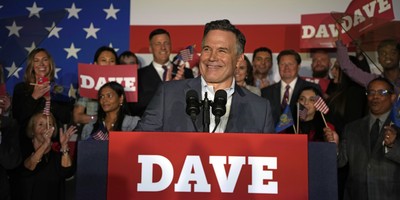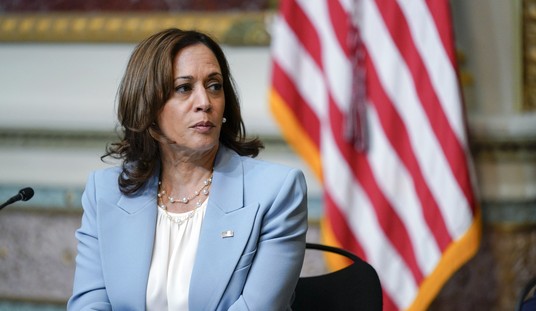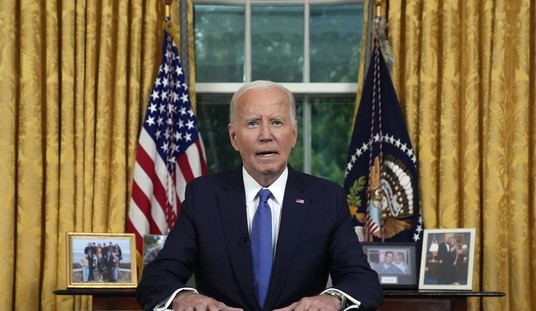WASHINGTON - While the Dow Jones industrial average merrily soared to new highs on Wall Street, it was a much more sobering and even depressing story on Main Street America.
Despite the stock market's rapid ascent to record levels, economic analysts were warning that it doesn't reflect the economy's anemic fundamentals and that we may well be entering another bubble that's about to burst.
The Washington Post's business page warned ominously Sunday that the Dow's exuberance, disconnected from any economic reality on the ground, comes with "plenty of caveats."
"But the biggest reason to discount the importance of the stock market reaching a new high is this: It hasn't been matched by a similar increase in the incomes and job prospects of Americans," the Post said.
"The jobless rate is hovering around 8 percent, and the average earnings in the private sector, adjusted for inflation, have barely budged for five years."
This isn't the first time the stock market has triggered a bull rally when the economy was flat and it won't be the last. For now, though, the market is blithely dismissing earlier fears that had kept it in check: the $85 billion, "fiscal cliff" sequester that hasn't lived up to the fear-mongering demagoguery that earned President Obama a bagful of "Pinocchios" from a battery of fact checkers.
Nor are the markets concerned about the March 27 deadline when the stop-gap bill that bankrolls the federal government expires. House Republicans will likely pass an extension through the end of this fiscal year to keep the government open and running, as they prepare for the far more important fiscal 2014 budget-cutting battle to come this spring.
Recommended
But at some point, the financial markets are going to have to take a much harder look at this economy's shaky fundamentals and face the harsh, stubborn reality of high unemployment, weak job creation, a shrinking work force, declining venture capital investment, looming health care and regulatory costs, flat incomes, and a mushrooming $16 trillion federal debt.
All of this is reflected in mediocre retail sales, declining small business formation and shrinking economic growth that barely budged in the last three months of 2012 by a recession-tilting one tenth of one percent.
The growth forecasts for the rest of this year are in the 2 percent range, though some top business economists say growth may not exceed 1.9 percent.
Virtually none of this gets reported on the nightly news or in our major newspapers. Last Friday, all the headlines trumpeted that the national unemployment rate fell from 7.9 percent to 7.7 percent in February when the economy added 236,000 jobs, up from a paltry 119,000 in January.
But the chief reason for the decline in the jobless rate has more to do with the millions of discouraged workers who've given up looking for a job -- and are not counted among the unemployed -- than the meager number of jobs created each month in the weak Obama economy.
"Although the adult population increased 165,000, the labor force decreased [by] 130,000 as about 295,000 additional adults chose not to look for work," said business economist Peter Morici. These workers, politely described as "marginally attached to the labor force," now total 2.6 million, according to the Bureau of Labor Statistics.
They don't get much if any attention in the news media, or from the Obama administration, for that matter, but the total number of long-term unemployed (those jobless for 27 weeks or more) stood at 4.8 million, according to BLS. They made up 40.2 percent of the unemployed last month.
A large share of the new jobs created last month were those whom the BLS calls "part time for economic reasons." These eight million individuals, the government says deep down in its report, "were working part time because their hours had been cut back or because they were unable to find a full-time jobs."
But among those Americans the BLS calls the "major workers groups," the jobless numbers are truly shocking: Among teenagers, between the ages of 17 to 19 who are often among the breadwinners in their family, 25.1 percent; blacks, 13.8 percent, and Hispanics, 9.6 percent.
These are among the poorest and the most vulnerable people in our country who have suffered the most from Obama's failed economic policies over the past four years.
If all of those discouraged workers who have dropped out of the work force were still counted as actively looking for a job, the real unemployment rate would jump to 10.9 percent.
"Add part time workers who would prefer full employment but can't find it, and the unemployment rate becomes 14.2 percent," Morici says.
Though these monthly job creation numbers get a lot of hype from the White House, they should be taken with a large grain of salt. What doesn't get much media attention is that the numbers are all too often revised downward in followup reports that go unreported or buried in the news accounts.
"Revisions subtracted a total of 15,000 jobs to the employment count in December and January," reports Bloomberg News. And there may be further revisions to come.
Meanwhile, Obama and his White House mouthpieces continue to boast about the dubious decline in the jobless rate, and they never miss an opportunity to take credit for the stock market's meteoric rise as one of their economic achievements.
But the pro-growth economic analysts at the Zero Hedge web site that closely track the economy know a duplicitous subterfuge when they see one.
"The current de facto policy of inflating asset bubbles to spark a 'wealth effect' is no substitute for policies that make it less burdensome to start new enterprises and hire employees," they observed last week. "If we scrape away this ceaseless perception management, we find legitimate broad-based prosperity is always based on rising employment and increased purchasing power of wages."
So "how are we doing as a nation?" the web site asks. "Unfortunately, the answer is 'terrible.'"
In 2012, when Obama boasted that the economy was "moving forward", New York Times economic columnist Paul Krugman, one of his earliest supporters, said, "This is still a terrible economy."
For millions of unemployed and underemployed people, and small businesses, it's just as terrible now, no matter what the stock market or the president says.

























Join the conversation as a VIP Member